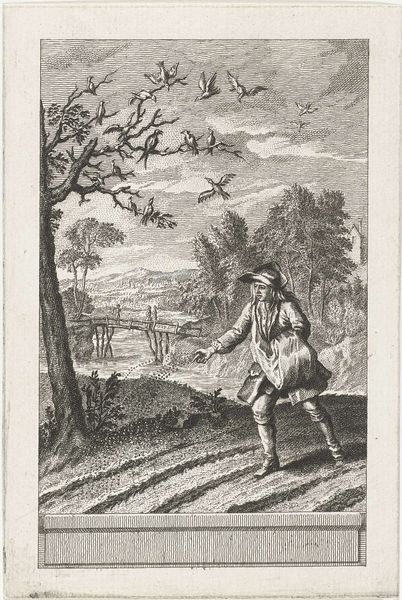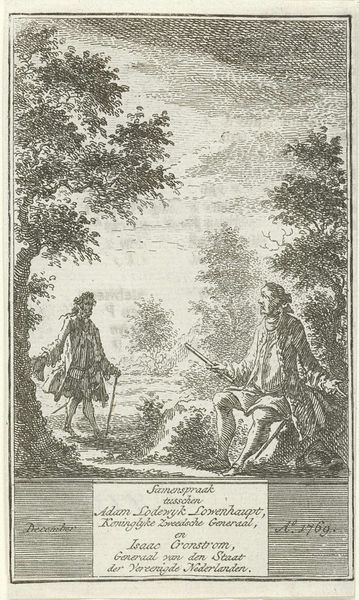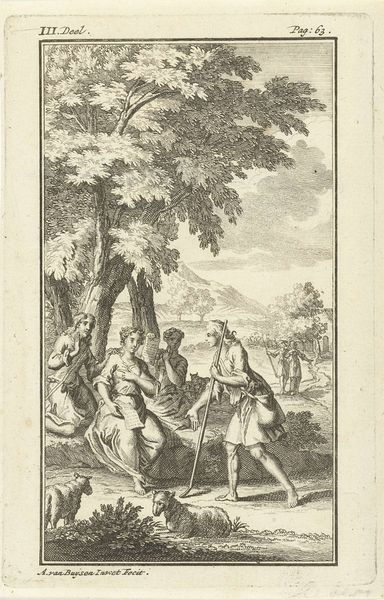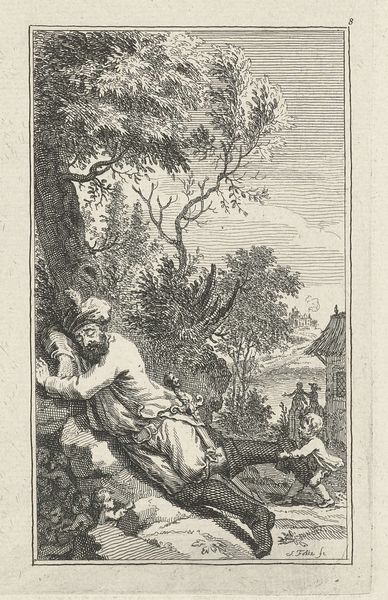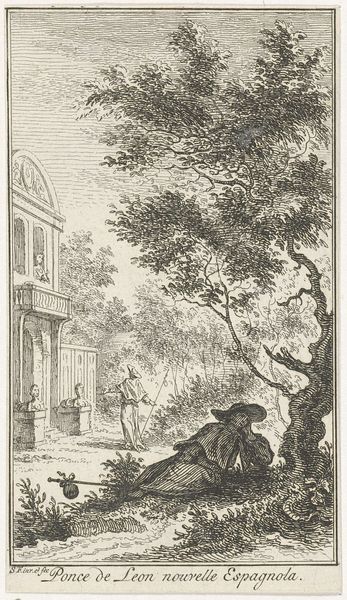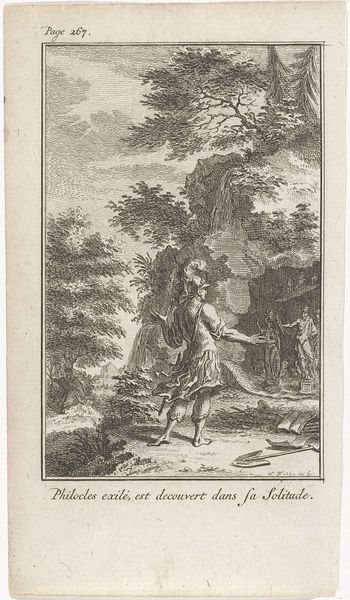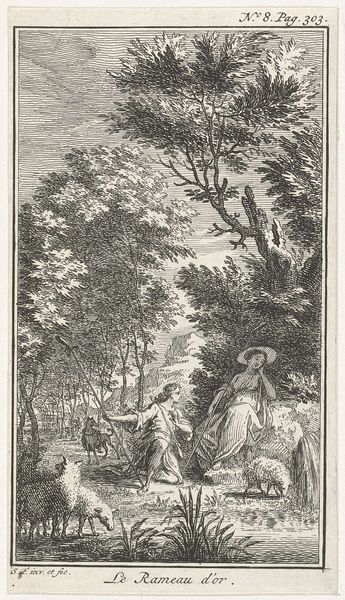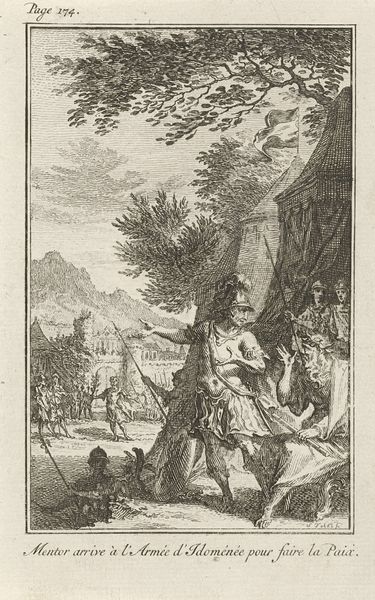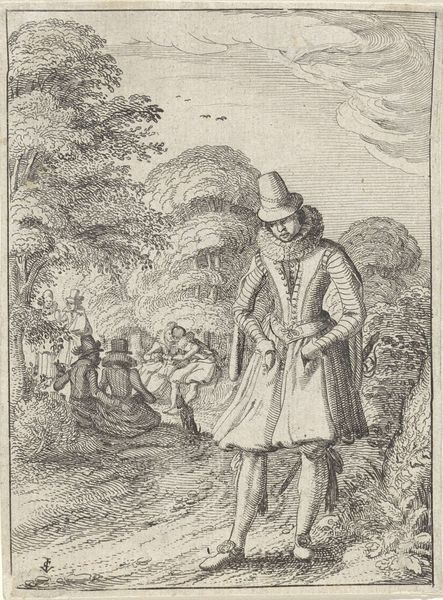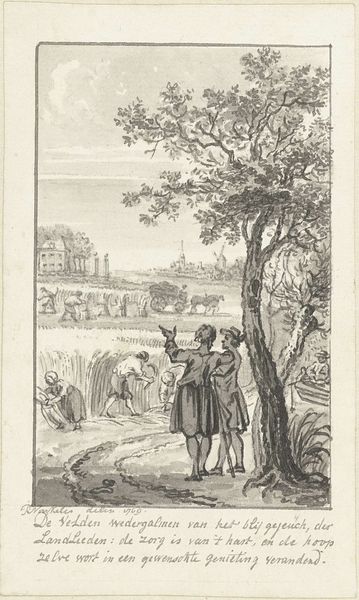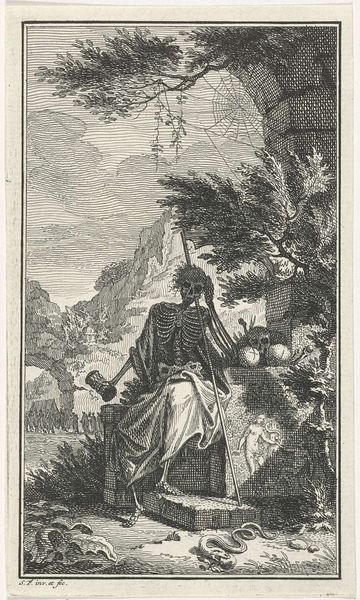
drawing, print, etching, ink, engraving
#
drawing
#
neoclacissism
#
narrative-art
# print
#
etching
#
landscape
#
figuration
#
ink
#
line
#
engraving
Dimensions: height 138 mm, width 92 mm
Copyright: Rijks Museum: Open Domain
Editor: Here we have Simon Fokke's "Landschap met ondergaande zon," which translates to "Landscape with setting sun," created sometime between 1723 and 1784. It's an etching, isn't it? The sheer detail achieved with line work is amazing. I am wondering, how should we understand this landscape today? Curator: Notice the meticulous engraving and etching techniques. They aren't just about representation; they're about production. The very act of creating prints democratizes art. Consider the labour involved: the engraver, the printer, and the societal implications of making art more accessible beyond elite patronage. How does that shift the understanding of "landscape" from a depiction of nature to a commodity? Editor: That's a fascinating point. So you're saying we should look beyond just the image of the sunset and think about how prints changed who could own and see art? Curator: Precisely. The printmaking process – the repeatable image, the labour of reproduction – speaks volumes about 18th-century society. Before photography, prints like these were primary means of disseminating information and aesthetics. And consider the material—paper, ink—commodities fueling a burgeoning print culture. How might the consumption of these images have shaped ideas about landscape, nature, and even ownership? Editor: I see. So the beautiful landscape isn't just a scene; it’s a product of labor and a reflection of changing social structures. The choice of ink, the paper type, these reflect economic realities, yes? Curator: Exactly. These materials, this method, dictated its reach and function. They weren’t passive choices. It encourages us to ask: who was this print for, and what work did it perform in the world? Editor: This really shifts my perception. It is no longer just the image, but an artifact embedded in a web of social and economic relations. Curator: Precisely. By focusing on these aspects we learn so much more about its value, its role in culture at the time, and, arguably, still today.
Comments
No comments
Be the first to comment and join the conversation on the ultimate creative platform.

